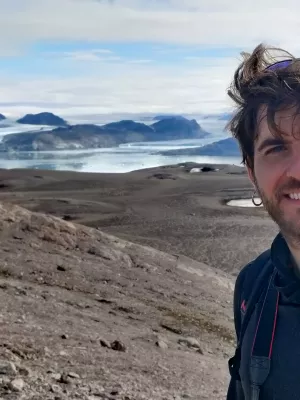
Albert Brangarí
Researcher

Vadose zone oxygen (O2) dynamics during drying and wetting cycles : An artificial recharge laboratory experiment
Author
Summary, in English
Vadose zone oxygen dynamics control all subsurface redox reactions and play a decisive role in maintaining groundwater quality. Although drying and wetting events are common in artificial recharge, their effects on subsurface oxygen distribution are poorly documented. We monitored oxygen concentration in the unsaturated zone in a mid-scale (1 m high) laboratory soil lysimeter, which was subjected to short wetting and drying cycles that simulated a highly permeable shallow aquifer recharged by river water. Ten cycles of varying duration were performed for a period of 85 days. Measurements of oxygen in the liquid and the gas phases were recorded every 20 s using non-invasive optical fibers (PreSens). The results provided high-resolution (in time) oxygen concentration maps. The infiltration rate revealed a decreasing trend during wetting cycles associated with biological clogging. Such a decrease with time was accompanied by a depletion of O2 concentration, occurring within the first few hours of the infiltration. During drying, O2 concentrations recovered rapidly at all depths owing to air flushing, resulting in a stratified vertical profile consistent with the biological consumption of O2 along the air infiltration path. Furthermore, drying periods caused a potential recovery of the infiltration capacity while preserving the soil biological activity. Scraping also led to the recovery of the infiltration capacity of the soil but was less effective than drying. Our experiment suggests that the small-scale heterogeneity played a key role in accurately mapping pore-scale O2 concentrations and should be considered in modeling O2 fluxes of unsaturated soils under natural or managed recharge conditions
Publishing year
2015-05-02
Language
English
Pages
151-159
Publication/Series
Journal of Hydrology
Volume
527
Document type
Journal article
Publisher
Elsevier
Topic
- Soil Science
Keywords
- Oxygen concentration dynamics
- Precision sensing
- Managed Aquifer Recharge
- Infiltration
- Drying–wetting cycles
- Biological processes
Status
Published
ISBN/ISSN/Other
- ISSN: 0022-1694

